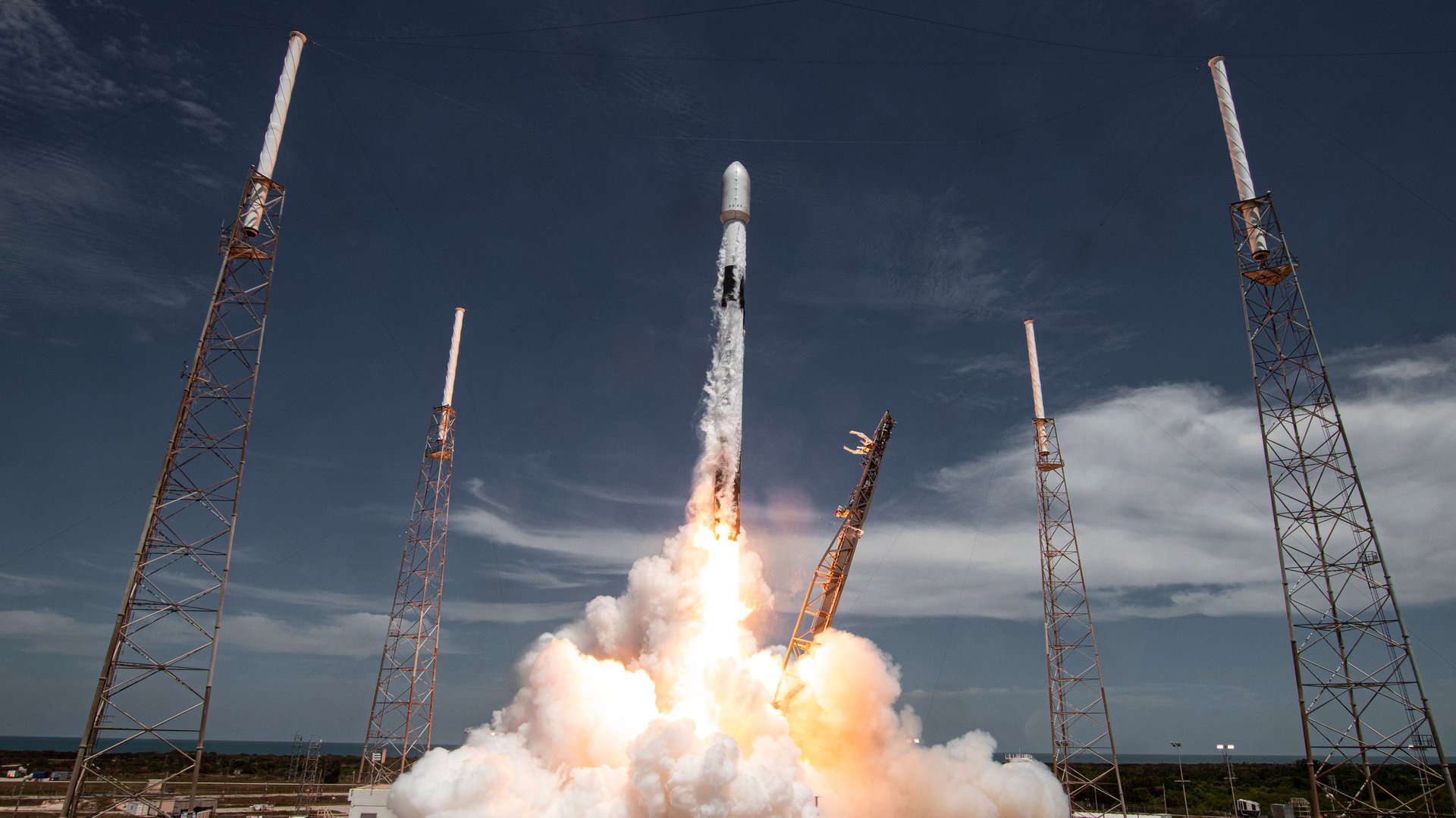SpaceX’s satellite rideshare rocket carries the industry’s next era
With all the memes and Martian visions, it can be hard to grasp the real impact that SpaceX has had on the high-tech economy.


With all the memes and Martian visions, it can be hard to grasp the real impact that SpaceX has had on the high-tech economy.
Consider Mike Cassidy, an MIT-trained aerospace engineer who spent a few years at Hughes Aircraft company in the 1980s after he graduated, working on communications satellites. “People would take 10 years from when they started working until something was launched,” he recalls.
Not fast enough. Cassidy instead made a career as an internet entrepreneur, selling several tech companies and leading Google’s Project Loon, which aimed to provide internet service from high-flying balloons. But things changed in the space industry: SpaceX made reusable rockets—and made cutting-edge space business safe for investors.
In 2016, Cassidy founded a company called Apollo Fusion, which makes electrical propulsion systems for small satellites. Apollo Fusion’s thruster will be deployed in space for the first time today (June 29, 2021) by a SpaceX Falcon 9 rocket. The novel thruster will drive a “space tug” or orbital transfer vehicle called Sherpa.
Built and operated by Spaceflight, a satellite launch broker, the powered Sherpa will help deploy 36 spacecraft, mostly built by venture-backed start-ups, to their final destinations after being dropped off in orbit.
SpaceX’s rocket will launch a ton of small satellites
SpaceX will launch more than 88 satellites in this mission, dubbed Transporter-2. It’s the third time the company has dedicated one of its Falcon 9 rockets to a cargo of diverse small spacecraft, and the industry has changed dramatically over that time. In 2018, the first time SpaceX flew a dedicated rideshare mission to launch 64 spacecraft, some 338 small satellites went to orbit in the entire year. In 2021, SpaceX already flew a record-setting mission that launched 143 satellites in January.
Today’s mission is a neat illustration of the value chain created by SpaceX’s investment in reusable launch vehicles. The rocket booster that will hurl this cargo into space will be flying for the eighth time, an idea that would have seemed fantastic even when the company made its first flight-proven launch in 2017. It can be launched frequently and at lower cost, which has pushed down the costs and delays associated with launching small spacecraft, a key obstacle to their commercial development.
That means small satellite companies can develop and launch products in months, not years; it creates demand for launch brokers and last-mile transport systems like Spaceflight and its Sherpa; and it seeds a market for space component suppliers, like Apollo Fusion’s electrical thrusters.
From 2010 to 2019, 181 satellites weighing less than 500 kg were launched each year, generating economic value of about $14 billion. In the 10 years from 2020 to 2029, forecasters expect an average of more than 1,000 small satellites to launch annually, generating $51 billion in economic value each year.
The space industry is raising billions in venture funding
These forecasts are matched by new records of venture investment in space (pdf), culminating with last year’s total of as much as $25 billion. SpaceX is one of the most valuable private companies in the world, which has spurred investors looking for the “next” major space infrastructure firm—see the $1.1 billion Relativity Space has raised in the last year or the bevy of rocket SPACs—and more importantly, the spacecraft business model that will be the industry’s “killer app.”
Elon Musk and Jeff Bezos are betting on internet access from orbit, with SpaceX’s Starlink network and Amazon’s Kuiper alongside efforts like OneWeb and Telesat. Gathering frequent, detailed information about the Earth from orbit and serving it up to industries of all kinds drives companies like Planet, Spire, Capella, ICEye, and Hawkeye. Launch vehicle makers like Rocket Lab, Relativity, and Firefly Aerospace aren’t just trying to make cheap rockets, but also climb up the value chain by developing satellites and space vehicles.
That’s a trend that Cassidy’s Apollo Fusion has benefitted from. As you might guess from the name, the firm was founded to build an atomic power plant. Like many attempts at this holy grail of energy, his team’s device produced electricity but didn’t reach the breakeven point. But the physics of fusion are not all that different from the techniques used to create ultra-efficient, low-powered space thrusters, and Apollo Fusion pivoted.
Earlier this year, the company was acquired by the rocket-maker Astra in a $50 million cash-and-stock deal. Astra has spent years developing rockets and hopes to record its first successful launch later this year, while going public after being acquired in a SPAC transaction which values the firm at $2.1 billion. (Astra declined to say whether the transaction would be necessary to obtain the $20-million cash portion needed to close the Apollo Fusion acquisition.)
Beyond launching satellites, Astra intends to develop spacecraft that can carry payloads for other firms, which will require the kind of propulsion developed by Apollo Fusion. The propulsion company will keep selling to customers besides its new owner, with the aim of making 1,000 thrusters a year and earning some $95 million worth of incentives for meeting revenue goals included in the acquisition.
“It’s a great time to come back into the aerospace industry,” Cassidy says. “20,000 satellites are projected to go up in the next four years.”